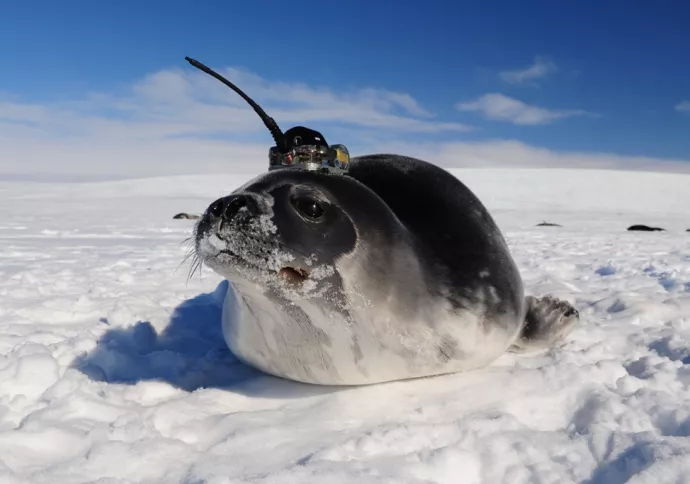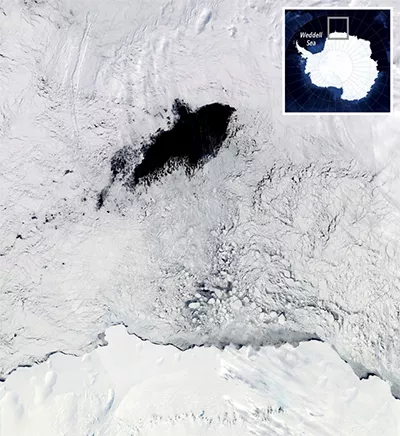
Storms play key role in Antarctic sea ice holes; study
A new study of mysterious holes in the winter Antarctic sea ice known as polynyas, which are as large as Lake Superior or the state of Maine, has found that atmospheric storms pay a critical role in these icy enigmas. The study used data from the Argo ocean observing program, weather stations, decades of satellite images--and even sensors on elephant seals that beam data back to shore.
“The Argo robotic water samplers (which stay submerged under the ice until its disappearance) are really cool,” says Professor G. W. Kent Moore, one of the authors of the study. “Indeed in 2017, one of these robots sensed the absence of sea ice within the polynya and came right up to the surface, providing unique data on the polynya.” Moore, who is a professor of physics at the University of Toronto Mississauga, was the 2016-17 Canada Fulbright Visiting Chair in Arctic Studies at the University of Washington.
The study, published in the June 10 issue of the journal Nature, explores why a rare hole in the Weddell Sea ice appears in only some winters, and what role it could play in broader ocean circulation as impacting the climate. A hole that appeared in 2016 and 2017 drew intense curiosity from scientists and reporters. Though even bigger gaps had formed decades before, this was the first time oceanographers had a chance to truly monitor the unexpected gap in Antarctic winter sea ice.

“Models have a tendency to predict the frequent development of a polynya in the region, whereas they are actually quite rare,” says Moore. “The importance of this work is that the mechanism that the models suggest did not appear to be active during these events. Rather than an accumulation of warm water at depth (that when brought to the surface can melt the ice), our results indicate that atmospheric storms play an important role in opening up and maintaining the polynyas.”
Due to climate change, fresh water from melting glaciers and other sources will make the Southern Ocean's surface layer less dense, which might mean fewer polynyas in the future. But the new study questions that assumption. Many climate models predict that the winds circling Antarctica will become stronger and draw closer to the coast — the new paper suggests this would encourage more polynyas to form, not fewer.
Large and long-lasting polynyas also affect the atmosphere, because deep water contains carbon from lifeforms that have sunk over time dissolving on their way down. Once this deep water reaches the surface, that carbon could be released—further exacerbating climate change.
Other co-authors on the paper include scientists from the University of Washington, University of South Carolina; Scripps Institution of Oceanography at the University of California, San Diego.
Read more:
